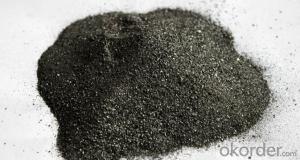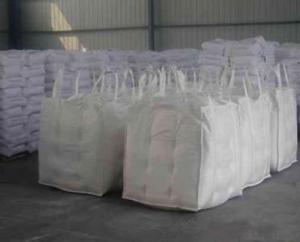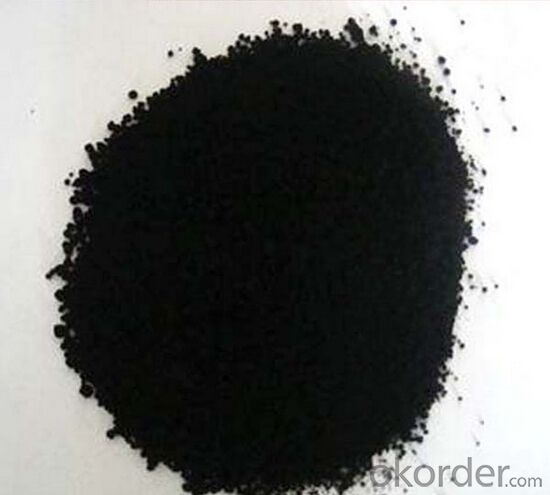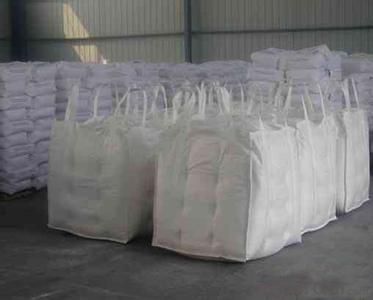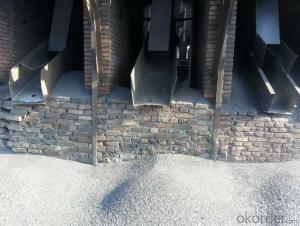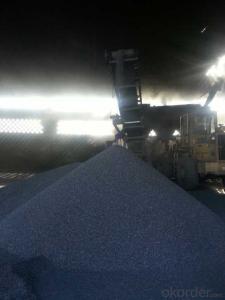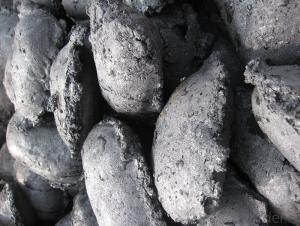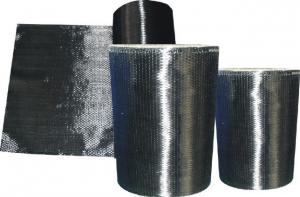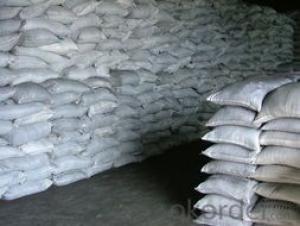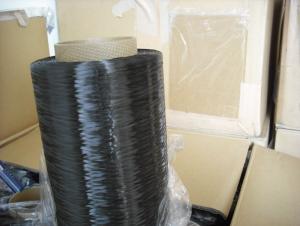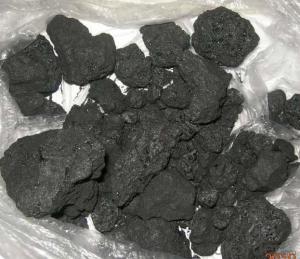Carbon Powder Carburant Carbon Additives Good enough
- Loading Port:
- Qingdao
- Payment Terms:
- TT OR LC
- Min Order Qty:
- 10 m.t.
- Supply Capability:
- 50000 m.t./month
OKorder Service Pledge
OKorder Financial Service
You Might Also Like
Specifications of Carbon Powder
- Carbon content: 94-99%
- Size: 50, 80, 100,200, 150, 300, 500 ,800mesh, etc
- Packing: 25kg or 1000kg
Carbon Powder Characteristics
Natural flake graphite has lubricity, high temperature resistant, conductive thermal conductivity, leakage, corrosion resistance, not good performance degradation
Carbon powder grain size
According to user requirements adjustment, main screening efforts for 50, 80, 100, 120, 150, 200, 325 mesh, etc
Carbon Powder Purposes
- As non-metallic mineral resources, has important defense strategic role
- Can be used for high and new technical projects, is of great economic and social benefits
- Is the metallurgical industry refractory material
- Is the chemical industry all kinds of corrosion of vessels, general equipment of carbon products
- Light industry is in pencil, ink and the main raw material of artificial diamond
- Is the electrical industry production carbon electrode and electrode carbon rods, battery materials
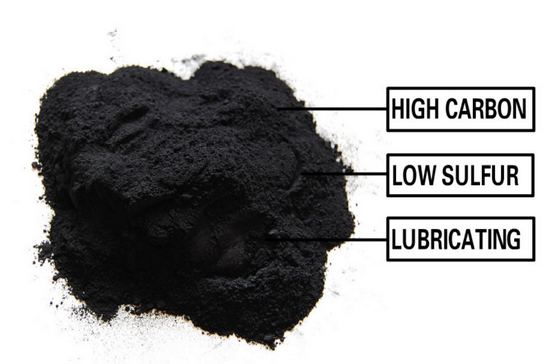
- Q: What are the advantages and disadvantages of carbon monoxide and carbon dioxide?
- But traditional carbon monoxide inhalation has the risk of poisoning patients and medical staff by accidental inhalation of high doses of carbon monoxide. That's the advantage. Carbon dioxide is an essential ingredient in plant photosynthesis, and its increase in content is beneficial to the growth of plants. Carbon dioxide can be used as fertilizer to grow crops in greenhouse vegetables. In addition, carbon dioxide can be used as a source of oxygen in diving and aviation. Liquid carbon dioxide has a broad application prospect, the liquid carbon dioxide as extraction medium of naturally occurring compounds from certain plants or plant sources, not only does not damage the bioactive substances contained in the raw material, and the product does not contain residual medium, method for spraying liquid carbon dioxide to the airport in two fog, mist removal efficiency of hundreds of times higher than that of solid carbon dioxide.
- Q: What can light hydrocarbon carbon five be packed with?
- Light hydrocarbon carbon fiveLight hydrocarbon carbon five is a light yellow or colorless transparent flammable liquid with a density of 0.60-0.68 and a boiling point of 36.1 degrees. The calorific value of liquid light hydrocarbons is 10800kcal/kg. (the current price in Chengdu is 2000 yuan / ton, and the monthly supply is about 1000 tons.).
- Q: What is the role of carbon in the formation of diamonds?
- The role of carbon in the formation of diamonds is essential, as diamonds are composed entirely of carbon atoms arranged in a crystal lattice structure. The extreme heat and pressure deep within the Earth's mantle cause carbon atoms to bond tightly together, forming the unique structure of a diamond. Without carbon, diamonds would not exist.
- Q: Method for making carbon fiber board
- Carbon fiber sheet is a carbon fiber heating paper, which is insulated and protected by epoxy resin.
- Q: What is carbon footprint labeling?
- Carbon footprint labeling is a system that provides information about the carbon emissions associated with a product or service. It aims to educate consumers about the environmental impact of their purchases and enable them to make more sustainable choices. The labeling typically includes a measure of the greenhouse gas emissions produced during the entire life cycle of a product, including its production, transportation, and disposal. This allows consumers to compare the carbon footprints of different products and make informed decisions based on their environmental values. Carbon footprint labeling is an important tool in promoting sustainability and encouraging businesses to reduce their emissions. It also raises awareness about the impact of individual consumption choices on climate change and encourages a shift towards more environmentally friendly alternatives.
- Q: How does carbon impact the formation and intensity of hurricanes?
- Carbon, specifically in the form of carbon dioxide, plays a significant role in impacting the formation and intensity of hurricanes. The increase in carbon emissions due to human activities, such as burning fossil fuels, deforestation, and industrial processes, has led to a rise in atmospheric carbon dioxide levels. This, in turn, contributes to the phenomenon known as global warming. Global warming, caused by the greenhouse effect, leads to an increase in sea surface temperatures. Warmer ocean waters provide the necessary energy and moisture for hurricanes to form and intensify. As the atmosphere warms, it can hold more water vapor, which acts as fuel for hurricanes, increasing their potential for stronger and more intense storms. The warming of the atmosphere also alters the atmospheric conditions that influence hurricane formation. It changes the vertical wind shear, which is the difference in wind speed and direction at different altitudes. Low wind shear is favorable for hurricane development, as it allows the storm to organize and strengthen. However, global warming can disrupt this balance and create unfavorable wind shear patterns, inhibiting hurricane development. Furthermore, the increased carbon dioxide levels in the atmosphere contribute to ocean acidification. As carbon dioxide dissolves in seawater, it forms carbonic acid, which lowers the pH of the ocean. Acidic waters can have detrimental effects on marine life, including coral reefs, which act as natural barriers against storm surges during hurricanes. The degradation of these ecosystems weakens their ability to protect coastal communities from the destructive impacts of hurricanes. In summary, carbon emissions and the subsequent increase in carbon dioxide levels have a profound impact on the formation and intensity of hurricanes. The warming of the atmosphere and ocean, along with changes in wind shear patterns, create conditions that favor the development and intensification of hurricanes. Additionally, ocean acidification resulting from excessive carbon dioxide levels weakens natural defenses against storm surges. It is crucial to address the issue of carbon emissions and reduce our carbon footprint to mitigate the potential consequences of climate change and its impact on hurricanes.
- Q: Wrought iron, steel, cast iron, cast iron, according to the content of the carbon? How many?
- That is not all according to the carbon content is divided. Because the carbon content of iron and iron.
- Q: What are the uses of carbon black?
- Due to its unique properties, carbon black finds wide-ranging applications in various industries. One of its primary uses is as a reinforcing filler in rubber materials, enhancing their strength, durability, and resistance to wear and tear. This makes them suitable for various applications, including tires, conveyor belts, gaskets, hoses, and shoe soles. Moreover, carbon black serves as a pigment in inks, coatings, and dyes. Its high tinting strength and ability to absorb ultraviolet light make it an excellent choice for coloring plastics, paints, and printing inks. Additionally, it is employed in toners for photocopiers and laser printers, ensuring high-quality printing with its dark color. Furthermore, carbon black is valuable in the manufacturing of electrodes for batteries and fuel cells. Its electrical conductivity and large surface area enhance the performance and efficiency of energy storage devices. Additionally, it is used in the production of carbon brushes, crucial components in electric motors and generators. In the construction industry, carbon black acts as a filler in concrete and asphalt, improving their strength, durability, and resistance to weathering. It reduces cracking and extends the lifespan of these materials. Additionally, it is utilized in the production of conductive polymers, which aid in static dissipation and electromagnetic shielding in various construction materials. In conclusion, carbon black has diverse applications across multiple industries. Whether it is reinforcing rubber, coloring inks and coatings, enhancing energy storage devices, or strengthening construction materials, carbon black plays a vital role in improving the performance and durability of various products.
- Q: How does carbon affect the acidity of oceans?
- Carbon dioxide (CO2) dissolves in seawater to form carbonic acid (H2CO3), which increases the concentration of hydrogen ions (H+) in the water, leading to ocean acidification. This decrease in pH affects marine life by hindering the ability of shell-forming organisms to build and maintain their shells, as well as impacting other vital biological processes.
- Q: Learn photography for nearly half a year, has always wanted to buy a tripod, want to buy carbon fiber tripod, what brand is better? The machine is D700+24-70About 3000 is too expensive ~ consider 1000 more just fine. Wage earners!
- In fact, only three foot two brands: brand and other brands of Gitzo
Send your message to us
Carbon Powder Carburant Carbon Additives Good enough
- Loading Port:
- Qingdao
- Payment Terms:
- TT OR LC
- Min Order Qty:
- 10 m.t.
- Supply Capability:
- 50000 m.t./month
OKorder Service Pledge
OKorder Financial Service
Similar products
Hot products
Hot Searches
Related keywords
